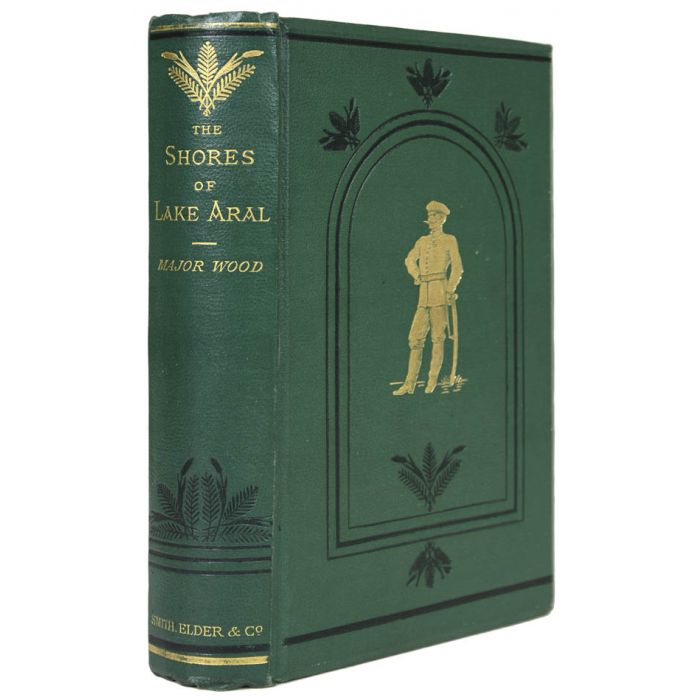Courtesy of Personal Library of Former Ambassador of Kazakhstan to the United States of America H.E. Erzhan Kazykhanov.
As we continue exploring the writings of Western travelers who visited Kazakh soil in the nineteenth century, we would like to draw the attention of our readers to a book published by Herbert Wood in 1876. He was a geographer and major in the Royal Engineers who accompanied an expedition under the auspices of the Imperial Russian Geographical Society to examine the river Amu Darya (or Oxus) and the region around Lake Aral in 1874.

Major Wood begins this book by famously saying that “the country spoken of in this passage, and included in the geographical expression West Turkistan, presents perhaps the greatest number of interesting points that could be found collected in any one single locality for the consideration of mankind”1.
Many authors have previously shared their observations on the nomadic way of life that Kazakhs used to live. Major Wood’s observation is very special and unique in its own way. His observations are full of facts and findings. He also provided a very lyrical portrayal of the livelihood of Kazakhs at that time. Here is how he put it: “Not seldom also will caravans of Kazakhs be encountered, every man, woman and child of whom are mounted on horse or camel back, property of every sort, drive their flocks and herds in front of the cavalcade in search of fresh pasturages and water. Such wanderings of the nomads are methodical, and their movements take place in a known and predetermined circle of change…” 2.
The records shared by Major Woods represent valuable information for those interested in both history and geography. For example, the author compares fertility levels of the banks of Syr Darya. He says that the “desolation and sterility of the deserts to the north of Lake Aral grow gradually less as the post road into Turkestan turns south at about forty miles from Syrdarya, and enters the country where commence the aouls of Kirghiz. These camps are pitched on patches of pasturage, covered with flocks and herds, which grow larger and more numerous as the river is approached” 3.
It is also astonishing how Major Woods compared the Syr to the Thames river. He wrote, “The Syr, which is fourteen times larger than the Thames is at Staines, is far from giving this idea on inspection, and the fact can only be fully realized after considering large portion of its volume which is utilized in the cultivation of the country it traverses as well as that which is actually wasted in marshes along its lower courses”.4
Major Woods also brilliantly described Lake Aral. He argued that circumstances incontestably proved that Lake Aral had formerly been a much larger and deeper body of water and that very few figures would show that about double the supply of water it received would soon raise its level to overflowing. He also suggested that if the present supply had been cut off, it would have only taken about ninety years to dry up the lake entirely. He observed that the basin was replenished with a very limited amount of rainfall and the existence of the body of water it contains practically depends on a single condition – that the quantity emptied into it by its tributary rivers shall equal that which is evaporated from its surface.
Major Woods then continued by adding that in historical times many rivers contributed their streams to Lake Aral but stopped short in the sand, while others changed their course and deprived their tributaries of a passage to the natural receptacle for their waters.
Based on these reasons, Woods explained that the lake degenerated from an extensive and tolerably deep body of water, possessed of a copious overflow, to a shallow pool, which at certain historical epochs was shallower still, or even perhaps dried up sufficiently to have caused its practical disappearance from the map.
Centuries later, Lake Aral is still one of the most fascinating topics that researchers from all over the world continue to study with a strong scientific interest. For those willing to learn more about this important subject, we suggest reading this useful volume.
A reprint of The Shores of Lake Aral can be ordered.






